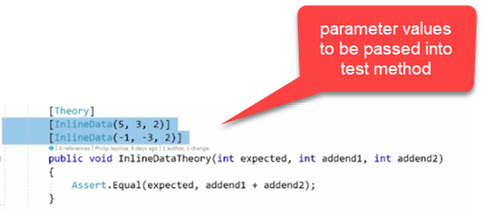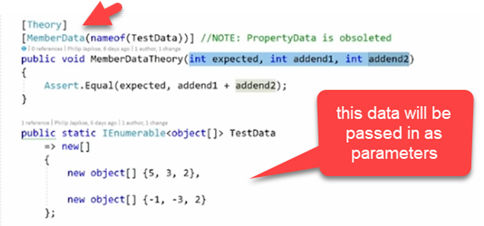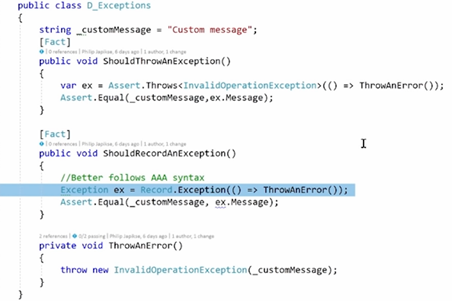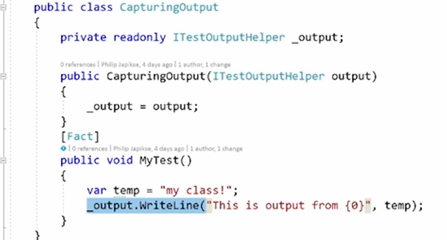Tech Blog
Since 2004
xUnit–what is it and why another unit testing framework

Primarily XUnit leverages some new features to help developers write cleaner test, as tests should be kept clean and treated as first-class citizens.
- November 2, 2018
Rest of the Story:
Special thank you for Channel 9 and @skimedic for sharing his unit testing knowledge.
XUnit leverage some of the new features to help developers write cleaner test, as tests should be kept clean and treated as first-class citizens.
- NUnit was not fully compatible with .NET Core 2 at the time
- xUnit is aimed at improving test isolation and trying to codify a set of rules to establish a testing standard.
- xUnit [Fact] and [Theory] attributes are extensible, so you can implement your own testing functionality.xUnit doesn’t use Test Lists and .vsmdi files to keep track of your tests.
- Microsoft is using xUnit internally, one of its creators is from Microsoft. xUnit was also created by one of the original authors of NUnit.
- Side-by-side Performance Comparison of testing frameworks can be found here https://blogs.msdn.microsoft.com/visualstudio/2017/11/16/test-experience-improvements/
Where to get it and how to add it to your projects (2 ways)
-
* Use Nuget to add xunit as well as the runner
* Add New Project – .NET Core xUnit Test Project
-
It does work with live unit testing
-
Add [Fact] attribute on a method to mark it as a test
-
Use Theory and InlineData as mechanism to pass data into the test
-
[Theory] attribute to mark a method as a test and setup incoming parameters (2 approaches InlineData and MemberData)
-
[InlineData(1,2,3)
-
approach to pass data into the test method (add additional InlineData attributes for multiple runs of same test)
-
MemberData(nameof(IEnumerable<object>
-
In the example below we are using a method to return data to be used (however this method could also read data from other files such as text or excel to be returned)
-
approach to pass data into the test method
-
xUnit runs it’s tests in parallel to take advantage of today’s processors
-
tests within one class are run serial
-
tests in multiple classes are run parallel
-
can be disabled by creating a test collection (add attribute [Collection({name})], and all within the same collection will be run serial
-
in order to test that an exception is thrown
-
Assert.Throws<InvalidOperationException>(() => ThrowAnError());
-
Setup/Teardown
-
There are no [Setup] and [Teardown] attributes, this is done using the test class’ constructor and an IDisposable. This encourages developers to write cleaner tests.
-
use constructor in place of Setup attributes to prepare tests
-
now use IDisposable to replace teardown i.e. public class ATestClass : IDisposable
public void Dispose() { //something here to clean up }
- for input/output there exists ITestOutputHelper as shown below to output log
Notes
- Works in .net core and .net framework
- TODO: Read up on Live Unit Testing https://docs.microsoft.com/en-us/visualstudio/test/live-unit-testing?view=vs-2017
References:
https://xunit.github.io/docs/why-did-we-build-xunit-1.0.html https://dev.to/hatsrumandcode/net-core-2-why-xunit-and-not-nunit-or-mstest--aei https://channel9.msdn.com/Shows/Visual-Studio-Toolbox/Unit-Testing-xUnit https://xunit.github.io/


